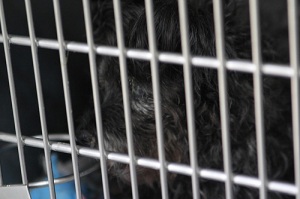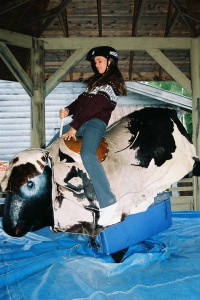I refuse to complain about going on a Caribbean cruise. This is going to be the most wonderful thing ever and I am terribly excited. However, this is the first time I’ve looked at planning a long, involved vacation with the eyes I have now. It’s a very new experience.
The cruise literature is full of glossy photographs of equally glossy food, promising how I’m going to have a wonderful time gaining 20 pounds. Of course, the centerpiece of every photo is a gleaming piece of meat. Okay, well, I’m used to that by now — there’s hardly a restaurant anywhere that doesn’t have the equivalent of a whole glazed pig splashed in pornographic, hickory-smoked ecstasy across the front page of its menu while the vegetarian “options” — oh, look, pasta again — languish in the back.
I thought I’d be fine when I read there are vegetarian options at dinner. However, the questions just seem to be piling up: Can I use the shampoo and lotion provided in the rooms? Can I even get dressed up for dinner, given that I own no animal-friendly cosmetics? Does the spa use cruelty-free products? Are the french fries in the buffet vegetarian? What do I do when some crazed shipboard photographer hands me an iguana, then demands I buy a photo taken with it? (This happened on my last cruise.)
I am also having to pick my shore excursions quite carefully. I’d love to swim with a dolphin, even at a hundred and twenty bucks an hour. However, there is pretty much no humane way to arrange this. Captive dolphins are rarely cared for properly, especially not at tourist traps in the Caribbean, and wild dolphins can be harassed to create these photo shoots or can be habituated by them into hanging around in human areas, which can be dangerous for both dolphins and humans. No dolphins for me.
Does my submarine or glass-bottomed boat expedition benignly view wildlife from a distance, or does it habituate wild fish to humans and/or disrupt their behavior patterns by having someone feed them in front of the viewers? Does the stable where I want to go horseback riding treat their horses — as well as the land through which they ride — appropriately? (Is horseback riding even a reasonable recreational activity for an animal lover?)
Will I be shopping for mementos of my trip? Well, maybe, but not black coral or conch shells, and apparently there’s a whole market of random animal parts (seahorses, starfish) I’ll be avoiding. And it’s not just animals I’ll be wondering about. Are we treating the inhabitants of the islands like animals? Should I really be “touring” these people’s homes? Sure, I’m putting money into their economy — but I could also just be donating that money. And is the cruise line I’m on behaving responsibly concerning the environment as well as its own employees?
Don’t get me wrong. I have almost 100 gigs of memory cards for my camera and I plan to bring back the best souvenirs — photographs. I am going to have a great time! I just find myself really interested by how much of this I did not see when I went on my first cruise *ahem* years ago. (It’s also somewhat disappointing that I’m embarrassed to even care about this. “It’s just a vacation — enjoy it! Live a little!”) What an interesting society we have. More food for thought….





 I read with mixed feelings
I read with mixed feelings 